Bobby Hart Interview Script

Well, actually, got involved in songwriting through the back door. Wanted to be a recording artist. Before that, I wanted to be a disc jockey. I came to Los Angeles in 1958 to go to disc jockey school. And it was a long—I was walking every day to work past this little recording studio that said ten dollars, come in and see what your voice sounds like. And finally, I got up my nerve on a Saturday and went in there and made a little demo, put some backing tracks down and made a demo. I was hooked from then on, trying to be—gave up disc jockey school, obviously, and wanted to be a rock and roll artist. But the first real break I got was meeting a guy named Jesse Hodges who said to me, “Yeah, you sound pretty good, kid, but we need artists who have their own material. Go home and write some songs and come back.” So I was just stupid enough to do it. He told me to do it, so I went and wrote some songs, demoed ’em and brought ’em back in, and he signed me for my first record deal.
I also met Tommy Boyce through Jesse Hodges’ office. It was located at the crossroads of the world, over on Sunset Boulevard, and he kind of had an open door policy. A lot of people, young and up-and-coming acts, were coming through his office all the time and kind of using it as a stopping off place. People like Johnny and Dorsey Burnette, and, you know, that’s where I met Tommy Boyce as well, and just we kind of rubbed shoulders, didn’t have any big connection until a few—about a year later when my buddy brought his roommate from Pasadena College up on a weekend, and said, “This is Curtis Lee, and he sings pretty good, and you got a record deal now, can you get him a record deal?” I actually introduced him to Jesse, and he did get a record deal. But in the process, Curt and Tommy became fast buddies and were hanging out all the time. So, since I was married, and, you know, the two bachelors would be hanging out, and they’d stop in every once in a while ’cause they were friends, but when Curtis got the opportunity to go to New York, he was signed by Stan Shulman, who managed Ray Peterson, and he took him to New York and signed him to a recording artist contract back there. And so then, Tommy started hanging out with my first wife and I at that time on the weekends.
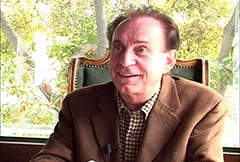
Well, actually, when I got to New York, that’s when things started to happen. The rough part was trying to get to New York. Tommy got a break to go there first, because Curtis Lee convinced his manager to bring him back to New York to write songs for the Curtis Lee recording project. So he was back there a year or two before me and having hits. They had two hits for Curtis, “Under the Moon of Love” and “Pretty Little Angel Eyes”, and they were writing for other people. Some of the—Phil Spector had just arrived in New York at that time, and he was involved in some of those productions and so, by the time I got a chance to get to New York, Tommy had a couple of hits, and a lot of doors were open. So it was rough in the sense that Tommy lived with his girlfriend up in Riverdale, and we would write in the day time, and when he’d go home in the evenings, I’d be stuck in a city that I didn’t know one soul in, and living in a flop house about the size of this desk, and so, that part was a little lonely, but the actual creative process was very good. New York was such a hotbed for—that was the center of the music business still, must remember in 1964. And so, when you’d get on an elevator, all of the music business basically was housed in two buildings right off Broadway. One was 1619 Broadway, the infamous Brill Building, and the other was called 1650, and it was just right off Broadway. And so you’d get on one of those elevators, you would, by the time you got to your floor, you’d have two or three assignments of songs that people were looking for for certain acts. And that’s how we actually got our first top ten record, getting on an elevator, and there was Wes Farrell saying, “I need something for Chubby Checker or for Jay and the Americans. I gotta have it by tomorrow. I’m taking, you know, I’m gonna take the train down to Philly and play it for Chubby” or whatever. So that’s how we—things happened pretty quickly once I got there.
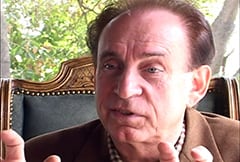
After having two or three hits in New York—“Come a Little Bit Closer” by Jay and the Americans was top ten, and then I had another top ten with Little Anthony and the Imperials called “Hurt So Bad”—and I was splitting my time between songwriting in New York City and going on the road with Teddy Randazzo as one of his Dazzlers, his backup singers. It was kind of like Joey Dee and the Starliters act, except Teddy sat behind the piano. He was a brilliant musician and piano player. But we would play places like the Thunderbird Hotel in Las Vegas and the Golden in Reno and Copacabana in New York, and so we would go out basically six months and then come back to New York. And during one of these trips in Vegas, Tommy got a call from Donny Kirshner, saying “I really loved ‘Come a Little Bit Closer’, and I would like to sign you to what used to be Nevins-Kirshner music, is now Screen Gems Columbia Music. They just bought us out, and we’ve opened up the L.A. office because we must be responsive to the L.A. television and motion picture scene.” So Tommy signed and came, moved back to Los Angeles. And of course, I couldn’t get away for four or five months. And Tommy kept calling and saying, “Come on, I can get you the same deal I got here. Hundred dollars a week, and we don’t have to have a day gig. We can just write all day.” And so, by the time I got there, once again, Tommy ahead of me had had another two or three hits working with a guy named Steve Venet, who was another contract writer at Screen Gems.
Well, once Tommy and I got together back in Los Angeles working for Screen Gems as contract writers, we got a lot of assignments right away, and there was as much action going on out here as there had been in New York, even more for us, because we were now contract writers. And the music business was just at that moment shifting from the east coast to the west coast, and so we did things like all of the pilot theme songs for the Dick Clark productions, because we were like short order cooks; we’d get ’em overnight and have ’em demoed and cut ’em into the video or the film, whatever it was in those days, in forty-eight hours. So we did a bunch of things for Dick. We did a lot of speculative demos for particular recording artists that were coming up to record. And then one day, our boss at Screen Gems, Lester Sill, said, “I want you to go over and meet with these guys on the lot, Columbia Pictures lot. They have an idea to do a pilot for a television show.” So Tommy and I went over and had a meeting with Bert Schneider of Raybert Productions. Of course, his partner was Bob Rafelson. And he explained what they wanted to do, a show called The Monkees, which was basically A Hard Day’s Night, Beatles on American television, a lot of madcap visuals, and we got it right away, and we convinced him right in that first meeting that we knew exactly what the counterpart musically should be, so he gave us the job of coming up with the theme song and two other songs that they needed for the pilot of The Monkees.
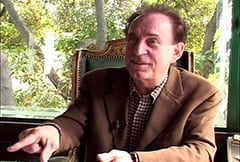
We didn’t see a script for The Monkees. It was just that initial description from Bert Schneider of what it would be, a thumbnail sketch, but we seemed to click into what it should be. It should be something that might sound a little Beatlesque but was not a complete ripoff of The Beatles. Something that encompassed the new wave of mod music that was coming from England. And so, of course, they needed the theme song first, and we actually wrote that by walking down the street from our house on Woodrow Wilson down to a little park in the Cahuenga Pass. And while walking, started snapping our fingers and kinda got that that would be a good groove for the piece. So by the time we got there, we basically had it in our minds that it would be “Here we come, walking down the street.” And then we envisioned the drumroll from the Dave Clark Five record, “Here We Come Again” (“Catch Us If You Can”). That would take us into the chorus, “Hey, hey, we’re The Monkees.” So that one almost wrote itself. Of course, they all did, you know. Tommy was a great collaborator, and we worked really well together. He was a mile-a-minute, throwing out ideas, and I was more the structural guy who was saying, “Hey, wait a minute, those five that just went by, forget about, but that one there, that one sticks. Let’s see what we can do with that.” And that’s the way we generally wrote. We both had a background of writing complete songs, so we both did lyrics, and we both did melodies. And so that one just came out. And then they needed a song where Davy, in the pilot show, Davy Jones would be walking on the beach, kind of reminiscing about a failed romance that he had. And so we had a song that we’d already written called “I Wanna Be Free”, and we envisioned that that could be something that could be kind of haunting and appropriate for that scene. And then they needed one more song for a dance scene in the pilot.
Well, we submitted our three demos for the three pilots songs with Tommy and I singing on the demos, and they cut those actually into the show, because they were so busy making the pilot, and the guys were working long hours, the Monkees, so they didn’t bother to try to put their voices on until after the show was sold. And they sold the show with Tommy and I doing all the singing. But that process, when it finally did come about, and the show was sold, then they said you need to go back in now to the studio and put the four Monkees’ voices on the theme song. And we tried that, but it didn’t go very well. The guys were just getting—I think they were just getting to know each other, and I think they were just kinda competing for who could be the rowdiest. And they would never settle down and do that actual vocal, so we dismissed that session, and we decided that we would only bring in one Monkee at a time to do vocals, and that’s pretty much what we stuck to after that. So, once the show was sold, then we had the—then, of course, it was onto making the records.
What we’d been led to believe by—just from that first meeting, really, and subsequent conversations with Lester Sill—that we were gonna produce the records for the—once the show was done. And that was really what we were excited about. We saw this as a recording act, and so did Raybert Productions, and that’s the way it remained until the show was sold. At that time, Donny Kirshner, who was the big boss in New York and basically hadn’t really noticed this project, then he started to get involved, and then we heard, “Well, you guys don’t really have a track record as producers. You’ve written songs, but not produced hits, and so we need to bring in hit record producers.” So Donny started trying a series of hit record producers as he called them, and I believe Snuffy Garrett was one, and they weren’t happy with. He went ahead and I believe he produced the theme song. They weren’t happy with it. And then they submitted to Mickie Most, who was having a string of hits in England with Donovan and others. They weren’t happy with his production for some reason. It might have had something to do with they liked the original concept, you know. You sometimes fall in love with a demo, and then that’s what you hear in your mind, and it’s hard to get used to something else. And so, as a last ditch effort, they flew out Gerry Goffin and Carole King to produce, and something happened in the studio, maybe more tomfoolery, who knows what it was, but that didn’t work out. And so, about this time, we’re getting very close to the air date in September for The Monkees to go on television. So at this point, Tommy really is pulling at Donny’s coat sleeves and saying, “You know, we created this sound. We know what it should be. We know how to produce it.” And so we convinced him with this proposal that we would take our band—I was working with a group called the Candy Store Prophets in clubs still—and so we said, “We’ll take the Candy Store Prophets into a ten dollar an hour dance rehearsal studio, which that’s all it cost you, a couple ten spots, and we’ll work up the arrangement. We’ll show you what exactly the finished song tracks will sound like, and you come down and listen.” So he came down, and we’d worked up a couple songs, and he really liked it a lot and gave us back the job that we had originally been promised.
Well, you must remember, the music business really worked fast in those days. It wasn’t like today where one musician or producer will sit down behind a keyboard and virtually do every part on the record, taking hours and weeks and months sometimes to do one cut. In those days, we would go in with a band, and sessions were booked in three hour increments, so that you would expect to come out after three hours with three or four finished tracks. You were allowed to do up to four by musician’s rules. And so, the result of that was that normally successful recording acts would have three albums out per year. And things worked pretty quickly. So we didn’t feel it as a crunch.
We were not surprised. We kind of envisioned it the way it turned out, and we really thought it was great and avant garde, and once again, we were busy in the studio, so we didn’t have much time to really dwell on it. We were just doing our little part of the job. We did get over to the set once in a while, like for instance, when we needed an album cover for the first album. And there wasn’t—it slipped through the cracks somehow. Nobody had shot an album cover. And so the album was finished, and no pictures. So Tommy and I ran over to the set with a photographer, and just physically on our own, between takes, grabbed the four guys and said, “Can we shoot a couple of pictures?” And Michael says, “Well, you got—” I think he gave us twelve seconds or something like that, or maybe it was twelve shots, something like that. Twelve shots, I think it was. And so we grabbed them out in the kind of a little alleyway between the set, and you can see actually in some of those shots that Michael has got his hands up, counting off the twelve shots that we had. And that became the album cover for the first album.
We didn’t really stop recording after the first album was—actually, we found out when the first album hit the streets that Michael had—Michael Nesmith had been in another recording studio cutting his songs, and so he had two cuts on that album. We didn’t realize that until the record came out. We didn’t realize that Donny basically had producers in several studios, trying to do Monkee records. And so we just continued recording when the first album was picked. Then we continued to do cuts for the second album. It took off like gangbusters, and it was almost overnight. Record sales were phenomenal. They were breaking sales records around the world. And it was always part of the plan that not only should they be a television show, and should they be a recording act, but they should be a touring act. And so, Raybert had already booked their first tour, and they ask myself and my band, Candy Store Prophets, to go along and backup the Monkees on their solo songs on this tour and also to open for the opening act for the tour. So we went out the first two or three, four months on all the weekend tours, and some of them were longer.
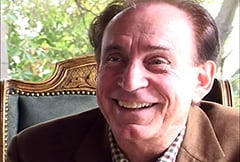
I think the last show, at least the last show on one of our longer tours, was the Cow Palace in San Francisco, and a lot of the people from the L.A. area who hadn’t had a chance to see The Monkees live on tour flew up to San Francisco from L.A., including Bert Schneider and a lot of the people from The Monkees’ production office, and including my partner Tommy Boyce. And they were of course blown away. You can hear descriptions, but it’s not the same as being there and seeing this unbelievable pandemonium in a big stadium like concert and what was going on with Monkeemania. And I remember Tommy Boyce bursting into my dressing room after that show and saying to me, “Bobby, forget these guys. That should be you and me up there.” And so that was probably the kernel, the first little spark of what later became Boyce & Hart as recording artists.
Well, in 1967, once The Monkees had decided to produce their own records and gotten the power to do that from Raybert Productions, they continued to come to Tommy and I for material and for songs, and we had songs on almost every Monkee album, but we were no longer having to spend those long hours in the studio. And as a result of Tommy and I both wanting to be recording artists, and the opportunities of course were there, because we had been featured in all the fan mags, and we already had a following. The kids knew who we were, and so we were kind of forced to be Boyce & Hart, even though our vocal styles were quite different, opposite ends of the pole. But we got talked in—I was the last one to be talked into it. Abe Somer, our attorney, said, “Look, I’ve got this deal. All you’ve got to do is sign, you know. A&M Records will spend this tremendous amount of money to do your albums.” And of course, Tommy was into it. I said, “But I don’t sing like that. I don’t do bubblegum, you know. I’m an R&B singer.” Anyway, they talked me into it. Actually turned out to be a good experience. We had our first hit single was “Out and About” in 1967, and then we had a top tenner with “I Wonder What She’s Doing Tonight”, followed by three or four other chart records.
So after our success as recording artists, of course, we toured as well, but we were touring as though we were The Rolling Stones, because we had all this money from recording, that we lost money on every tour. But we toured first class with limos and jets and so on. And had a really good time doing it. Took the band, which was basically studio musicians for the Monkee records with us, at least for the first album. And then, when our deal was up at Screen Gems, they wanted to re-sign us as writers, we were able to negotiate a deal where we signed as writers and recording artists, and they were gonna start our own record company, which they did start our own record company, called Boyce & Hart Aquarian Records, for our future releases. And also as a television—they signed us to do a television sitcom. And so, at that point, they then put us on all of the existing Screen Gems television shows to do guest starring roles. So we were—we had a run there that was a lot of fun doing guesting roles on I Dream of Jeannie with Barbara Eden and of course working with Sally Field. We’d worked with Sally as music supervisors on her Gidget show, and now she was doing Flying Nun, so we got to be guest stars on that show. We did Bewitched. This is while they were developing our own sitcom. It turned out that we weren’t able to take it that far, but it was through our own choice, not through theirs. It was a long story, but Tommy decided to quit the business at the end of 1969, after we’d headlined the main room of the Flamingo Hotel in Las Vegas. He said, “I’ve had enough”, and we gave some of the money back and didn’t have our own TV show.
Well, The Monkees has had a revival it seems at least every ten years, and then sometimes in other countries in between. The first major one that I remember was in Japan when they ran a Kodak commercial using “Daydream Believer” I believe it was as the music. And there was a giant Monkee explosion in the early ’70s or mid-’70s in Japan. All of the Monkee albums charted, all of the Boyce & Hart albums charted in Japan, anything having to do with The Monkees. So that was the first eye-opener that Screen Gems and Tommy and I had that this was gonna live on for a while. And then in 1976, a friend of mine who was booking shows in the far east came back into town. He said, “You know, I just came back from Thailand, and there’s a big promoter there who would love to book The Monkees. Could you make a call?” So I called Micky, and he said, “You know, we’re not really doing that” and who knows where Peter is, off somewhere, and Michael doesn’t want to tour, so I gave the message, and then my friend said, “Well, what about you and Tommy joining Davy and Micky, making the four, having four guys again?” So we had a lunch meeting, Micky and Davy and Tommy and I, and discussed the possibility and said, well, we’ll give it a shot. And so we said go ahead and book the southeast Asian tour, which was about a year a way, and so in the meantime, we started getting booked in the United States, mostly in amusement parks. Probably every amusement park known to man. So we worked that whole year in 1976, ’75 and ’76, touring as Dolenz, Jones, Boyce & Hart, the guys who sang ’em and the guys who wrote ’em, the golden great hits of The Monkees show. I think that was why we didn’t go on longer, ’cause it took too long to say it. But it was very successful. Our first concert was at Six Flags Over Mid-America near St. Louis, and I believe it was twenty-three thousand kids showed up at our first show. So we knew there was an audience there that was still hungry during the hiatus of ten years or so, hadn’t seen The Monkees and wanted to. So we continued up until after the southeast Asian tour. We did Taipei, Singapore, Kuala Lumpur, Hong Kong, several cities in Japan, and then we wound it up at the, I believe at the end of ’76.
In 1986, again, ten years later, there was another big Monkee explosion, and that was another series of accidents, if you will. Number one was a promoter by the name of David Fishof had the idea to put a tour together, a twenty-year tour, anniversary tour, and had booked, started booking that, and around the same time, MTV decided to license the Monkee television shows, and they had a weekend Monkees marathon one weekend, and that just really started the whole ball rolling, and so The Monkees toured that whole year or two. And I believe they were the highest grossing touring act of 1986. Really, that’s the first time they really made big bucks, and they made more money that year than they had made in their whole careers as Monkees.
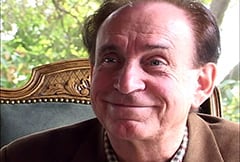
Well, it’s interesting and gratifying to look back these many years later and see that the Monkees are still with us, and they’re still being played somewhere. Actually, they’ve been played in some country, in some television market, they’ve been pretty continuously for all of these years. And as we talked about, the records themselves have been staples that have gone on to sell for years and years. Yeah, I think it’s gratifying that the records hold up as well as they do. They still sound pretty fresh, and that we had an opportunity to do a lot of music that was married to visuals, and so, that in itself kinda seems to ensure that they’ll have a life of their own that’ll probably far outlast mine.